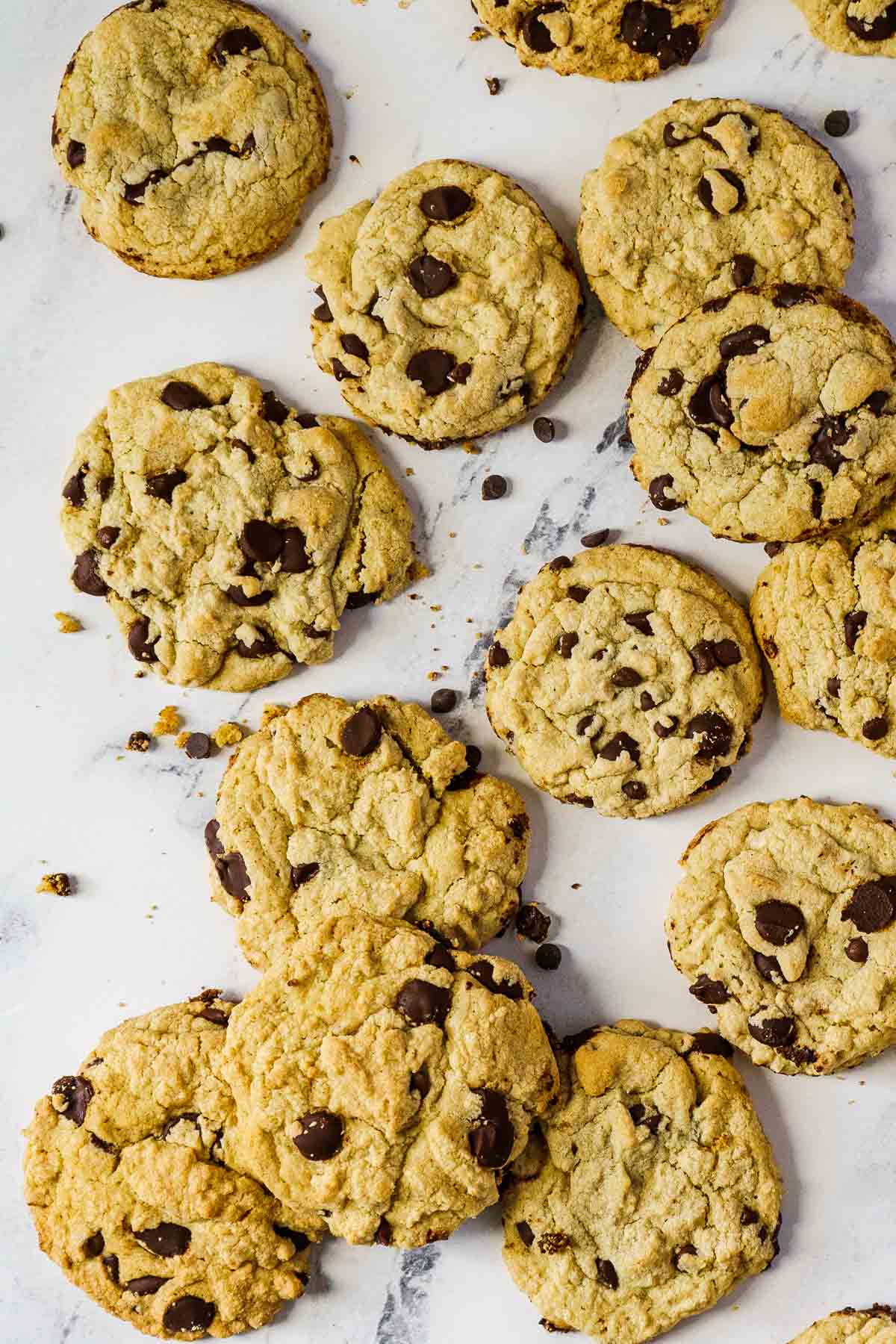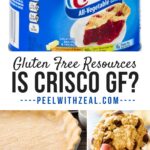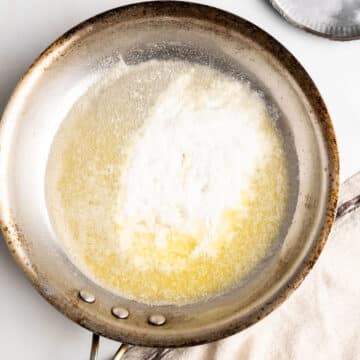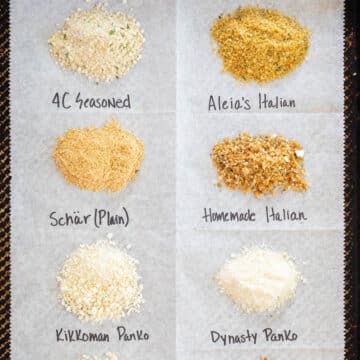Shortening is a staple in all types of baking but often we get nervous when we adopt a gluten-free diet. Am I reading all these labels correctly?
Crisco shortening is labeled gluten-free but not certified gluten-free. But a quick internet search will yield the result that it may be cross-contaminated.
Let me tell you why this isn't likely and Crisco shortening products are safe for someone with celiac.
But first, let's talk about what shortening is and how it is used in baking.

This post may include affiliate links. Please read my disclosure policy.
Jump to:
What is Shortening?
Shortening is any type of fat that is solid at room temperature. This includes lard (i.e. animal fat) and vegetable oils, like Crisco. It can even include certain kinds of butter with high-fat content and low water content.
Why Use Shortening?
These types of fats have a high smoke point and are ideal for frying. But they also can be great for baking.
In traditional baking, shortening creates a flaky crust by shortening the gluten strands.
In gluten-free baking, shortening keeps baked goods moist after baking. This is why I use vegetable shortening in my gluten-free chocolate chip cookie recipe and my gluten-free pumpkin cookies.
Crisco is dairy-free making it a vegan butter alternative in baking.
Ingredient Review
Crisco's All-Vegetable Shortening contains just a few gluten-free ingredients.
- Soybean Oil
- Fully Hydrogenated Palm Oil and regular Palm Oil
- Mono And Diglycerides- Fatty acids
- TBHQ (Tertiary butylhydroquinone) And Citric Acid- Antioxidants that prevent fat oxidation and extend shelf life.
None of the above raw ingredients contain gluten. Additionally, there shouldn't be any concerns for cross-contamination based on the manufacturing process.
Shared Lines and Facilities
Crisco is owned by B&G Foods, it was purchased from The J.M. Smucker Company in 2020.
When I recently called B&G Foods' customer support line I learned that their lines are dedicated and but not shared for vegetable shortening. However, the facility is not dedicated gluten-free.
Shared Lines vs Shared Facilities Labels
Company statements regarding allergens within the same facility or on the same line are totally voluntary. As is labeling a non-certified gluten-free product as gluten-free.
All labels are reviewed by a company's legal team and they are signing off on the gluten-free component.
Large food manufacturers are risk-averse when it comes to labeling. Trust me- I worked for a 3rd party food packager, a raw ingredients company, and a large food manufacturer for a total of 15 years.
Now you are probably asking why the company doesn't just certify the item is gluten-free.
Based on my past experience working at Abbott Nutrition, I can tell you that it has to do with the value to the consumer being lower than the cost of an expensive testing program.
Less than 2% of the US population has been diagnosed. While Crisco is a half a billion dollar brand. Creating a testing program will have no measurable impact on sales given the product is voluntarily labeled gluten-free.
Flavor Variations
Other Crisco products include butter-flavored shortening and both regular all-vegetable oil baking sticks and butter-flavored sticks.
All of these items are labeled gluten-free on the can and on the manufacturer's website.
Interestingly, the shortening sprays are not labeled gluten-free on the website but are on the few cans I checked at the store. Read the labels carefully.
Cross Contamination at Home
The most likely chance of cross-contamination is actually at home and not in a manufacturing facility. To minimize the chances of getting gluten into the product label your Crisco as gluten-free baking only.
Use dedicated spoons and measuring cups for baking to ensure there is no wheat flour contamination.

Crisco Alternatives
There are no substitutions for Crisco that are certified gluten-free.
Here are a few of the common shortening brands:
- Store Brands- Large grocery store brands like Kroger and Target's Market Pantry sell tub shortening. Also called "white label", store-branded and private label foods are typically produced by one or two 3rd party manufacturers and sometimes even the actual brand name manufacturer. They should have similar ingredients and allergen info on the label so read carefully.
- Nutiva- A sustainably produced and organic product that appears to have no gluten-containing ingredients but is not listed as gluten-free.
- Spectrum Organics- A single ingredient shortening product (Palm Oil) that is labeled gluten-free in a manner that is similar to Crisco.
- Margarine- In baking, margarine that is labeled can be substituted for Crisco.
- Coconut Oil- Most recipes can have coconut oil substituted but the texture will be slightly different.
Check out our full list of substitutes for Crisco.
Gluten-Free Baking Recipes
Summary
- Crisco is labeled gluten-free but not certified.
- Crisco has no gluten-containing ingredients.
- Crisco is made in a facility that also handles gluten but not on the same manufacturing line.
- Cross-contamination is more likely to happen in the home than during the manufacturing process.
- Celiacs should feel safe using Crisco but can use certified gluten-free margarine as a substitute in baking.
As always, read labels as they change often and use your best judgment. And don't judge if someone else isn't comfortable using products that aren't certified gluten-free.










Comments
No Comments